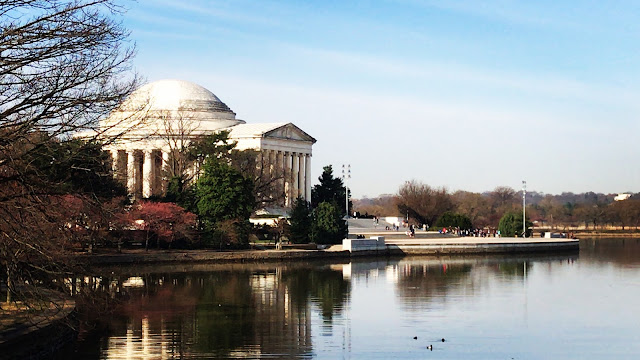No cherry blossoms, no problem
Val and I are in Washington, D.C. for a week. Val is attending a training course in the city and I am on vacation mode, fresh from boot camp.
---
Val's workshop in D.C. is well-timed because it falls smack on the first week of the cherry blossom festival. So what was I to do, right? I trooped to the Tidal Basin, prepared to take photos of the cherry blossoms gifted by Yukio Ozaki, Tokyo's mayor in 1912. The traces of pink on the other bank of the Tidal Basin made me hopeful that I'd see cherry blossoms.
But as I got closer, I realised that I was actually staring at the buds of cherry blossoms... I arrived way too early!
The iconic view of the Thomas Jefferson memorial with the cherry blossoms in the foreground was not what I saw. Instead, I saw trees that still had to wake up from their winter hibernation. Yes, there were trees with green leaves already but there was still a lot of trees that were still to bloom.
That doesn't mean that all trees were not flowering yet. There were some cherry trees with flowers already.

Near the Martin Luther King memorial, yellow flowers were already greeting visitors.

At the Franklin D. Roosevelt memorial, red flowers were drooping towards tourists.
Of course, orchids cultivated inside the Smithsonian Museum of Natural History were blooming healthily.
Daffodils along the National Mall brightened up the gardens.
As well as the purple flowers at the Enid Haupt garden.

But the most stunning among all the flowers I found in D.C. was the saucer magnolia. From afar, because I'm such a novice, I thought that these were cherry blossoms... giant cherry blossoms! But thanks to the Enid Haupt garden's tree labels, I learned that these beautiful flowers are actually hybrids designated as Magnolia x soulangeana.
With all the flowers I've seen, I had no reason to complain. I've seen cherry blossoms before anyway. My failure to see the Washington blooms just mean one thing: I shall return!












Comments
Post a Comment
Thank you for dropping by!
Before moving on, please share your thoughts or comments about the post. :)
Thanks again!